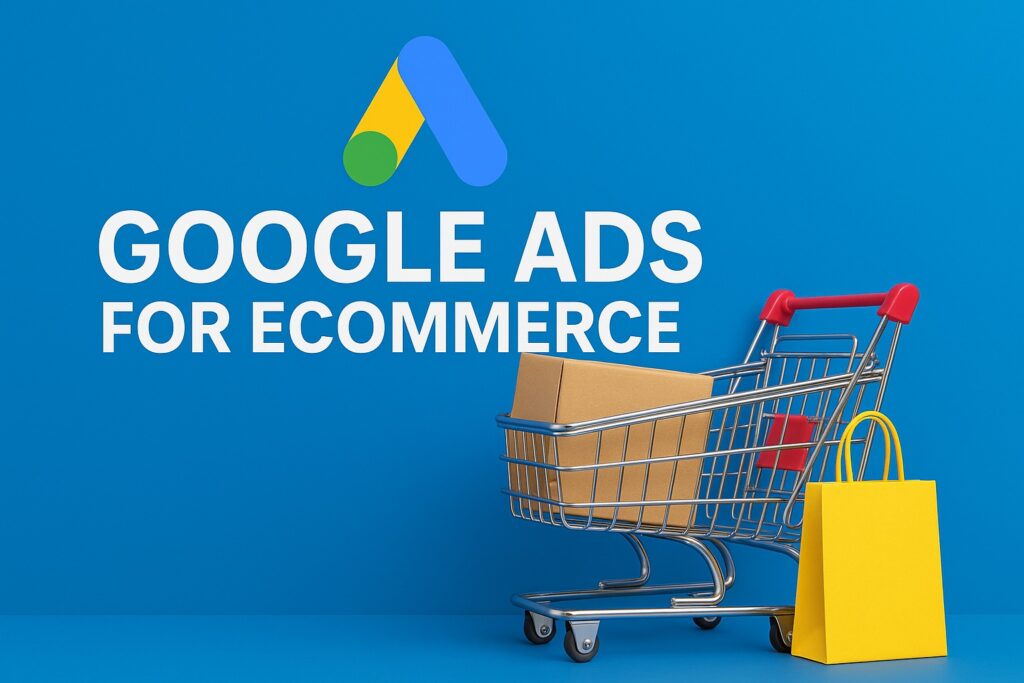Successfully navigating the eCommerce landscape in 2025 requires more than an exceptional website or product lineup. With global eCommerce sales expected to soar beyond $7 trillion by 2025, competition is fiercer than ever. This is where Google Ads comes in, acting as a powerful tool to drive traffic, conversions, and business growth.
Whether you’re running a local boutique or a multinational online store, understanding how to harness the full potential of Google Ads can set you apart. This guide will walk you through everything you need to know—from ad formats to smart strategies—to optimize your eCommerce efforts.
Choosing the Right Google Ads Format for eCommerce
Google Ads offers a suite of ad formats tailored to various eCommerce needs. Picking the right ones is essential for maximizing performance.
Search Ads vs Shopping Ads vs Performance Max
| Feature | Search Ads | Shopping Ads | Performance Max Ads |
|---|---|---|---|
| What It Is | Text-based ads triggered by keywords on Google Search | Product-based ads with images, pricing, and store info | AI-driven ads that run across all Google channels |
| Where They Appear | Google Search results (top and bottom) | Google Shopping tab, Search results, and partner sites | Google Search, Shopping, YouTube, Gmail, Display Network, Discover |
| Best For | High-intent keywords like “best running shoes under ₹5,000” | Product-specific searches like “Buy Nike Air Force 1” | Full-funnel goals like lead generation, sales, brand awareness |
| Ad Format | Text headlines, description, ad extensions | Product image, title, price, brand, and ratings | Automatically created assets (text, image, video) based on your feed and goals |
| Control Level | High control over keywords, bidding, and messaging | Moderate control via Merchant Center and product feed | Low manual control – Google automates placement, bidding, and creative based on goal |
| Targeting Options | Keyword-focused targeting with manual bidding or automated strategies | Product and audience-based targeting, usually driven by product feed | Goal-focused targeting with audience signals, plus real-time user intent data |
| Ideal For | Service-based businesses, lead generation, and branded searches | E-commerce brands looking to showcase product listings | Brands wanting omnichannel presence with automation and broader reach |
| Campaign Setup Requirements | Requires keyword research, ad group structure, and ongoing optimization | Requires Google Merchant Center setup and optimized product feed | Requires campaign goal selection, asset uploads, and audience signals |
Summary:
- Use Search Ads if you want precision targeting for high-intent search terms.
- Use Shopping Ads to visually showcase your products for users comparing or browsing.
- Use Performance Max if you want to simplify campaign management and let Google’s AI optimize across channels.
When to Use Shopping Ads
If you’re managing an online store, Shopping Ads are highly effective for showcasing product catalogs and driving direct sales.
Tip: Opt for Smart Shopping campaigns if you want Google’s AI to handle bidding, targeting, and placements. However, Standard Shopping campaigns give you full control over these parameters, offering room for granular optimizations.
How to Set Up a High-Converting Google Ads Campaign
Every successful campaign begins with a solid structure. Here’s how to get yours right.
Campaign Structure Best Practices
- Organize campaigns by categories, like “Men’s Shoes,” “Women’s Shoes,” or “Accessories.”
- Set clear goals for each campaign. Focus on metrics like ROAS (Return on Ad Spend), sales volume, or website traffic.
- Use tightly themed ad groups with specific keywords to improve targeting and quality scores.
Ad Group Creation and Targeting Tips
Target relevant keyword sets within each ad group and tailor ad copy to resonate with your audience. For example, if you’re targeting “Bluetooth headphones,” mention key differentiators like “long battery life” or “noise cancellation.”
Keyword Strategy for eCommerce Google Ads
Keywords form the backbone of any Google Ads campaign. Here’s how to choose the most effective ones.
Finding Profitable Product-Based Keywords
- Use tools like Google Keyword Planner, SEMrush, or Ahrefs to identify high-volume, low-competition keywords related to your products.
- Focus on product-specific keywords like “organic cotton T-shirt” to align directly with customer intent.
The Role of Long-Tail and Transactional Keywords
Long-tail keywords like “best insulated water bottle for hiking” often have lower competition but higher conversion rates. Transactional keywords like “buy,” “discount,” and “free shipping” also indicate a strong intent to purchase, making them valuable for eCommerce campaigns.
Optimizing for Voice Search
Don’t ignore conversational queries like “Where can I find affordable vegan leather bags?” Ensure your keywords address these new search behaviors.
Product Feed Optimization for Google Shopping Ads
A properly optimized product feed can spell the difference between visibility and obscurity.
Key Elements to Optimize
- Title: Use descriptive and keyword-rich product titles that convey value.
- Images: High-quality, professional images are non-negotiable.
- GTINs and Pricing: Accurate Global Trade Item Numbers (GTINs) and competitive pricing enhance your ads’ relevancy and click-through rate (CTR).
Tools for Product Feed Management
Platforms like DataFeedWatch or Shopify apps make it easy to clean, enrich, and optimize your product feeds for Google Shopping Ads.
Pro Tip: Stay vigilant about Google’s advertising policies to prevent feed disapprovals, which can impact impressions and sales.
Smart Bidding Strategies to Maximize ROI
Google’s Smart Bidding options help your campaigns adapt to changing user behavior in real-time.
Target ROAS vs Maximize Conversions
- Use Target ROAS for campaigns aimed at increasing revenue while maintaining efficiency.
- Opt for Maximize Conversions if you’re focused on generating as many sales as possible within a set budget.
Testing and Scaling Bidding Strategies
Always allocate a portion of your budget for testing new tactics. Evaluate performance over time and scale what works while phasing out underperforming strategies.
Conversion Tracking and Attribution
Tracking conversions is essential to measure the effectiveness of your campaigns.
How to Set Up Conversion Tracking
Use Google Tag Manager or integrate GA4 (Google Analytics 4) with your website to accurately capture metrics like clicks, purchases, and cart abandonments.
Attribution Tools and Insights
Understand the role of each channel in your customer’s path to conversion. Tools like Google’s Attribution Reports can show whether last-click, assisted, or multi-touch interactions led to sales.
Common Mistakes to Avoid in eCommerce Google Ads
Even seasoned marketers can make errors that hurt their campaigns. Avoid these pitfalls for better results.
- Overusing broad match keywords can waste budget on irrelevant clicks.
- Neglecting negative keywords can lead to unqualified traffic.
- Ignoring mobile ad performance may cause you to miss opportunities, as nearly 60% of searches now come from mobile devices.
Measuring Success with Key KPIs
Regularly monitor these metrics to evaluate and optimize your eCommerce Google Ads campaigns.
- ROAS (Return on Ad Spend): Evaluate how much revenue your ads generate for every dollar spent.
- Conversion Rate: Assess the percentage of clicks that lead to sales.
- CTR (Click-Through Rate): Higher click-through rates may indicate more relevant ads.
👉 List of top Performance Marketing Agencies in India
Scaling Google Ads for eCommerce in 2025
Google Ads is evolving rapidly, and scaling your strategy is critical to stay competitive.
Retargeting and Upsell/Cross-Sell Campaigns
Re-engage customers who visited your site but didn’t convert with retargeting ads. Use upsell and cross-sell campaigns to increase Average Order Value (AOV).
AI-Driven Automation and Creative Updates
Leverage Google’s AI for automated campaign management and continuously refresh your creatives to keep ads engaging.
Take Control of Your eCommerce Growth with Google Ads
Whether your goal is to attract new customers or boost sales, Google Ads is a must-have tool for eCommerce success in 2025. Implementing smart strategies, optimizing your product feed, and leveraging advanced tech like Smart Bidding can make all the difference. Looking for expert help to take your eCommerce Google Ads to the next level? Contact XtremeAds today and discover why we’re a trusted PPC partner for businesses worldwide.


